Table of contents
The raw, snow-white coconut flesh is the flesh of the ripe coconut ( Cocos nucifera). These fruits of the coconut palm are the second largest fruits in the world (after the pumpkin) and taste like nuts, although they are not botanically classified as nuts.
Use in the kitchen
What does a fresh coconut taste like? The raw, fresh coconut flesh has a firm consistency and an intense coconut flavor. In contrast to young coconuts, ripe coconuts have a significantly higher pulp content and also a higher energy content. The coconut water is contained in smaller quantities in ripe coconuts. Their pulp is also not as easy to scoop out as the young "coco jelly". You have to break it out with a sharp object or scrape it out of the shell with a serrated spoon, which creates coconut flakes. The coconut flesh can then be processed.
What is copra? The best known form is coconut flesh in its dried form, also called copra: mainly chopped up as coconut chips or coconut flakes. It can also be found in many sweets and baked goods or as decoration. Coconut oil is also extracted from copra; a "waste product" from this production is coconut flour.
How to use coconut meat? Fresh coconut meat pieces can be used to enrich muesli, fruit salads, ice cream, smoothies, cocktails or other desserts. Cooked in curries or other Asian stews, fresh coconut pieces give a particularly exotic taste.
The high fat content of mature coconut meat should not be ignored. In particular, the very high proportion of saturated fatty acids in coconuts is unhealthy.
Opening a coconut
To open a coconut properly, it is first important to drain the coconut water. To do this, place the coconut upright and hold it firmly. Place a wedge or screwdriver on a germination hole and use a hammer to push it through the coconut shell. You can then pour the coconut water through the opening into a bowl or glass. Then use the wedge-shaped side of the hammer to hit the coconut in as straight a line as possible until it bursts apart. Now you can loosen the coconut flesh and remove it from the shell.
Vegan recipe for raw coconut chutney
Ingredients: 100 g fresh, shredded or grated coconut meat, 1 small onion, 2 tsp fresh coriander, 5 g fresh ginger, ½ tsp chili powder, ½ tsp cumin, 2 garlic cloves, 1 tsp sugar, 3 tbsp tomato ketchup, 6 pitted dates, 2 tsp lime juice, ½ tsp sea salt.
Preparation: Put all the roughly chopped ingredients, including the spices, into a blender and puree until smooth. Once you have a soft puree, add the lime juice and mix again.
If you don't have fresh coconut available, you can replace the 100 g with 50 g of coconut flakes and 50 g of coconut milk. The vegan chutney will keep in the fridge for a few days.
Vegan recipes with coconut meat (raw) can be found under the note: " Recipes that have the most of this ingredient ".
| Not only vegans or vegetarians should read this: Vegans often eat unhealthily. Avoidable nutritional errors. |
Shopping - Storage
Ripe, raw coconuts are available at selected supermarket chains such as Coop, Migros, Spar, Rewe, Edeka, Billa etc. Other major retailers such as Aldi, Lidl, Hofer, Denner or Volg etc. only sometimes have coconuts in their range. Online shops or organic supermarkets also offer fresh coconuts in organic quality. Ripe coconuts can be recognized by their hard, brown, fibrous shell (inner stone shell, endocarp). They are actually the kernel or seed of the stone fruit - without the outer thick fibrous layer with leathery outer shell (exocarp). Of the three germ holes, only one germ ever begins to grow, the others harden. The softer hole is also used in ripe fruits to extract coconut water.
The shake test helps to identify a fresh, ripe coconut: These gurgle much more loudly. The riper the coconut, the less amniotic fluid it contains. Coconuts are not climacteric, which means they do not ripen further.
Coconuts are in season all year round because the conditions in the tropics are constant for their growth. 12
Young coconuts are sold with a green, leathery outer shell or with a "chopped off" green shell, which then has a beige color.
Coconut meat can be found dried as coconut flakes or coconut chips.
The availability of coconut meat varies depending on the size of the store, catchment area, etc. Our recorded food prices for the DA-CH countries can be found above under the ingredient image - and by clicking you can see their development at various suppliers.
Storage tips
An unopened, ripe coconut will last in the fridge for about 3 weeks. We do not recommend storing it for too long, as the coconut dries out over time. If there is no coconut water left, the coconut flesh will no longer taste as good. It will have a hard, fibrous consistency and the taste will be reminiscent of soap.
Once the coconut has been successfully opened, it should be consumed within 3 days. Otherwise, not only will the fat it contains take on a rancid taste, but the high humidity will also make it very susceptible to mold. It is therefore recommended that the flesh be sealed airtight - e.g. in a plastic bag. In addition, opened coconuts lose their special aroma very quickly.
How can you dry coconut meat? To increase the shelf life, you can chop the flesh (cut or grate) and freeze it in the freezer or dry it gently in the oven or dehydrator. Dried coconut meat can be stored in an airtight container, kept dry and cool, for several weeks.
Ingredients - Nutritional values - Calories
How many calories does a fresh coconut have? The flesh of a ripe coconut has about 354 kcal/100g. Ripe coconut flesh has about 33% fat, of which 30% is saturated fatty acids. It also contains 15% carbohydrates, 3.3% protein and 9%fiber. The water content of coconut flesh is about 45-50%, depending on the degree of ripeness. 2
The high fat content makes coconuts so interesting for the oil industry. They are also used to make margarine, process everything into coconut milk, pastes, or make flakes or grated coconut from the dried copra. What remains after pressing is used as animal feed.
In addition to the main nutrients, fresh coconut meat (in contrast to pure coconut fat) also contains valuable elements in significant quantities: the trace element manganese is still present in good quantities at 1.5 mg. Aronia berries contain 1.7 mg or garlic at 1.7 mg/100g. It helps the body build connective and cartilage tissue and is significantly involved in carbohydrate metabolism. 2
Fresh coconut meat has almost the same amount of potassium as the banana recommended for athletes (358 mg/100g). Potassium is not only responsible for regulating water balance, the essential macronutrient is also responsible for maintaining the osmotic pressure of the cells and for normal blood pressure. Pistachios contain even more potassium at 1007 mg/100g. 2
Coconut meat also contains copper, selenium, iron and phosphorus. 2
The complete ingredients of coconut meat (raw), the coverage of the daily requirement and comparison values with other ingredients can be found in our nutrient tables. In the article Nutrients explained you will get a detailed insight into the topic.
Effects on health
Is coconut meat healthy? In the growing areas, coconuts are a staple food and very important for the people living there. The coconut water quenches thirst, the flesh is very high in energy, it can be eaten raw or dried for later use. The leftovers are used in the tropics as animal feed. But coconut products are also widely used in western countries. Vegans in particular use coconut milk as a milk or cream substitute, the oil for cooking and baking or for the skin, etc. According to interested circles, coconut blossom sugar is also said to have many advantages over conventional beet sugar.
However, the coconut boom in the western world is a big mistake, because the composition of the fatty acids in the oil is particularly unhealthy: Coconut oil consists of around 82% saturated fatty acids. At around 50%, even palm oil is healthier in this respect! The ratio of omega-6 to omega-3 fatty acids in the oil is 85:1, which is significantly higher than the recommended maximum of 5:1 ( linoleic acid, LA, to alpha-linolenic acid, ALA). In addition, many coconut products are heavily processed and people usually consume far too much of it, sometimes hidden. The question: is coconut healthy? can be answered with a clear no.
Dangers - Intolerances - Side effects
The saturated fatty acids contained in coconut oil raise blood cholesterol levels, which promotes heart disease. 3 There are studies that show that coconut oil lowers blood cholesterol levels because it has a high proportion of medium-chain fatty acids, such as lauric acid. However, these studies used pure lauric acid: You would have to consume a lot of coconut oil to achieve the desired effect, which can lead to other side effects. Read more about this in the text about coconut oil (coconut oil, coconut fat).
When you consume coconut fat or coconut oil, the undesirable LDL cholesterol in your blood increases, which promotes cardiovascular disease. However, the healthy HDL increases slightly more, which then improves the total/HDL serum cholesterol ratio. Measured only by this ratio, coconut fat appears to be healthy, which is a fallacy. A 2016 study analyzed 21 research papers, including 8 clinical studies and 13 observational studies, and concluded that replacing coconut oil with unsaturated fats reduces the risk of cardiovascular disease. 10
The praise of the high proportion of medium-chain fatty acids (MCT) should also be treated with caution. It is true that our body can absorb them more easily from the gastrointestinal tract into the bloodstream, which is why they are mainly used in patients with digestive and absorption disorders who suffer from energy deficiency and impaired fat absorption. But apart from that, the disadvantages clearly outweigh the advantages, especially when you consider that extra-enriched MCTs are often used for the aforementioned medical conditions and not pure coconut oil. Experts also recommend the use of MCTs only for strictly specified medical indications. 11
A traditional method of drying opened coconut shells is over an open fire, which leads to the development of PAHs (polycyclic aromatic hydrocarbons) and 3-MCPD fatty acid esters. These are suspected of being carcinogenic. 4
Ecological footprint - animal welfare
The global average water footprint of coconuts is 2687 l/kg. This is a very high water consumption compared to vegetables (322 l/kg) and is above the global average for oil fruits in general (2364 l/kg). 15 Butter comes in at 7692 l/kg. 14
Researchers in Brazil examined the water and CO 2 footprint of unripe,green coconuts. The CO 2 footprint varied between 0.116 kg CO 2 eq/kg and 0.363 kg CO 2 eq/kg (6 conventional farms and one organic farm). 16 For comparison: the avocado (purchased in Germany) has an average CO 2 footprint of 0.6 kg CO 2 eq/kg. Fresh peaches have 0.2 kg CO 2 eq/kg; organic butter has 11.5 kg CO 2 eq/kg. 17
The values of the coconut can vary greatly; depending on the specific growing conditions, the geographical location of the plantations and the production methods. Coconuts produced in Malaysia cause 1.13 kg CO 2 eq/kg from "cradle-to-gate". 21 Depending on how far and by which means of transport the coconut has to travel to get to the consumer, the CO 2 footprint increases. For example: a pineapple bought in Germany imported by ship comes to 0.6 kg CO 2 eq/kg; while a pineapple that "arrives" by plane comes to 15.1 kg CO 2 eq/kg. 17
For detailed explanations of various sustainability indicators (such as ecological footprint, CO2 footprint, water footprint), see our article: What does the ecological footprint mean?
The coconut hype should be viewed with extreme skepticism, not only because of the health aspects, but also with regard to sustainability: the area required to grow coconut palms is associated with land theft, deforestation and the destruction of local biodiversity. 18 In order to satisfy the high demand, mixed crops are rarely planted, preferring monocultures instead. 19 In addition, coconut palms grow much more slowly and produce around 1/3 less yield (per hectare) than oil palms (for palm oil), for example, which is why more area is needed. In order to distribute coconuts around the world, transport routes with immense CO2 emissions are accepted. Not to forget the social conditions that come with the consumption of this so-called "superfood". Small farmers often manage the coconut plantations for the western market, but the price is dictated by large trading companies. The farmers can barely survive on this remuneration. If day labourers manage company-owned plantations, the conditions there are usually inhumane. 8
As early as 1996, warnings were issued that, in addition to the burning of fossil fuels, deforestation of the rainforest is a major factor in increasing the CO 2 content in the atmosphere. 20
Many coconut farmers live below the poverty line. At the same time, rainforests are being cleared for cultivation, which leads to a loss of biodiversity. Certificates ensure social and environmental standards that benefit the world. 22 There are several certification options for coconut farmers. Collectively, these are called 'voluntary sustainability standards'. These are standards for meeting certain sustainability goals such as human rights, income equality, health and safety, environmental protection, etc. (e.g. organic, fair trade or Rainforest Alliance). 23
Potentially, the coconut also offers many opportunities to improve the environment by increasing carbon sequestration and reducing carbon emissions. The coconut palm has good carbon storage because it is a perennial plant, and all parts of it can be used: coconut trunks, leaves and fruit. 23
Land use change (e.g. rainforest to plantation) and cultivation practices (organic vs. conventional) are key issues when it comes to reducing the ecological footprint of coconuts. Social aspects and animal welfare are also of great importance (more on this under coconut oil and coconut water).
Animal protection - species protection
The higher the palm trees (up to 25 m), the more difficult the harvest, which is done with knives on meter-long stems or by climbing up. Sometimes captured monkeys (macaques) are trained for the harvest, which means years of captivity and torture. The use of monkeys as harvest workers can be traced back to the year 2500 BC. A trained monkey harvests 1600 coconuts a day, while a human can only manage 80. 13
Worldwide occurrence - cultivation
The tropical palm plant, Cocos nucifera, has been used by humans for at least 3000 years. Its origins probably lie in Polynesia (Pacific island region). 5 Coconut palms are cultivated throughout the tropical belt of Asia, Africa and South America. The Indonesian and Philippine islands contain the largest areas of cultivation. 6 In 1786, the Spanish issued a compulsory decree in the Philippines that required every family to plant 200 square feet (approx. 18.6 m 2) of land with coconut palms. 5
Cultivation - Harvest
Fresh, loose, nutrient-rich and deep soils are ideal for coconut palms. They thrive best on sandy loam soils on coasts and river mouths. Coconut palms are very sensitive to cold. They occasionally grow at 1600 m above sea level (inland Africa on Lake Kivu or in eastern Peru). 5 However, they thrive best at temperatures between 27 and 30 °C and although they can tolerate salt water, they need fresh groundwater and a moist environment. 1
High-stemmed coconut palms only start to bear fruit after the seventh year. From the 15th year, coconut palms produce their full yield (approx. 0.7 t/ha). After 60 years, the yield drops and the palms should definitely be replaced after 80 years. 5 Wind and insects pollinate the female flowers, which produce fruit in different stages of ripeness all year round. The fruits are not actually nuts, but stone fruits. Under ideal conditions, coconut palms can produce a maximum yield for between 15 and 60 years. One palm tree produces around 30-40 ripe coconuts per year, but there are also varieties with maximum yields of between 70 and 150 fruits per year. 1
Green, young coconuts are harvested after about 6 months; ripe, brown fruits after 12 months.
Dwarf coconut palms have a different growth rhythm and bear their first fruits as early as the third or fourth year. These short-stemmed coconut palms ("dwarf mutants", "Malayan Dwarf") 7 are genetically resistant to "lethal yellow disease", "lethal yellowing" or "deadly yellowing", a phytoplasma disease (mycoplasmosis) that is dangerous for palm trees and is transmitted by special cicadas. 5
Further information
The coconut palm ( Cocos nucifera) is a tropical palm and the only species of the genus Cocos. However, there are many different varieties. Two important overarching varieties are 'dwarf' and 'tall' coconut palms - small and large coconut palms. 1
The coconut is extremely important for the lives of many people. Around 17 billion coconuts are harvested worldwide. More than 80 million people earn their living from growing and processing coconuts: in the Philippines alone, there are around 25 million people. Sri Lanka has even had its own minister for coconuts since 1976. 1
Alternative names
In English, the fruit, the tree or the seed are called coconut or cocoanut. When referring to the palm tree, one speaks of the coconut tree.
Other uses
In addition to the use of the fruit, the entire plant also serves as an excellent source of raw materials for the inhabitants. The wood is used primarily in India and Sri Lanka as building material for huts, the leaves as roofing, the coconut fibers (coir) of unripe fruits can be spun into yarn, 9 fibers of ripe fruits are used as thermal insulation, filling material and for making baskets, mats and ropes. The dry coconut shells are used as fuel.
Bibliography - 23 Sources
| 1. | Newman M, Kirker CL. Coconut: a global history. Reaktion Books; 2022. 173 S. |
| 2. | USDA United States Department of Agriculture. |
| 3. | Zong G, Li Y et al. Intake of individual saturated fatty acids and risk of coronary heart disease in US men and women: two prospective longitudinal cohort studies. BMJ. 2016; 355:i5796. |
| 4. | Pini U. Das Bio-Food Handbuch. Ullmann: Hamburg, Potsdam. 2014. |
| 5. | Brücher H. Tropische Nutzpflanzen. Ursprung, Evolution und Domestikation. Springer: Berlin, Heidelberg, New York. 1977. |
| 6. | FAO Food and Agriculture Organization of the United Nations. |
| 7. | Rehm S, Espig G. Die Kulturpflanzen der Tropen und Subtropen. Anbau, wirtschaftliche Bedeutung, Verwertung. Eugen Ulmer: Stuttgart. 1976. |
| 8. | Utopia de: Kokosnuss. |
| 9. | Carus M, Gahle C, Pendarovski C et al. Studie zur Markt- und Konkurrenzsituation bei Naturfasern und Naturfaser-Werkstoffen (Deutschland und EU). Gülzower Fachgespräche. Fachagentur Nachwachsende Rohstoffe. 2008. |
| 10. | Eyres L, Eyres MF, Chisholm A, Brown RC. Coconut oil consumption and cardiovascular risk factors in humans. Nutr Rev. 2016;74(4):267–280. |
| 11. | Łoś-Rycharska E, Kieraszewicz Z, Czerwionka-Szaflarska M. Medium chain triglycerides (Mct) formulas in paediatric and allergological practice. Prz Gastroenterol. 2016;11(4):226–231. |
| 12. | Produce Blue Book. Coconut Market Summary. |
| 13. | Fobar R. Monkeys still forced to pick coconuts in Thailand despite controversy. National Geographics. 2021. |
| 14. | Mekonnen MM, Hoekstra AY. A global assessment of the water footprint of farm animal products. Ecosystems. 2012;15(3):401–415. |
| 15. | Mekonnen MM, Hoekstra AY. The green, blue and grey water footprint of crops and derived crop products. Hydrol. Earth Syst. Sci. 2011;15:1577-1600. |
| 16. | Sampaio APC, Silva AKP et al. Reducing the carbon and water footprints of Brazilian green coconut. Int J Life Cycle Assess. 2021;26(4):707–723. |
| 17. | Reinhardt G, Gärtner S, Wagner T. Ökologische Fussabdrücke von Lebensmitteln und Gerichten in Deutschland. Institut für Energie - und Umweltforschung Heidelberg. 2020 |
| 18. | Koh LP, Wilcove DS. Oil palm: disinformation enables deforestation. Trends in Ecology & Evolution. 2009;24(2):67–68. |
| 19. | Die Umweltberatung Wien. Kokosöl - Fluch oder Segen der Karibik. |
| 20. | Melillo JM, Houghton RA, Kicklighter DW, McGuire AD. Tropical Deforestation and the global carbon budget. Annu. Rev. Energy Environ. 1996;21:293-310. |
| 21. | Carboncloud. The climate intelligence platform. Coconut. |
| 22. | Ramin M. Wer hat der Kokosnuss vertraut? Die Zeit. 6. Juni 2022. |
| 23. | United Nations Conference on Trade and Developement. Assessment of organic certification in the coconut oil value chain in the Philippines: Fostering the developement of green exports through voluntary sustainability standards. 2020. |

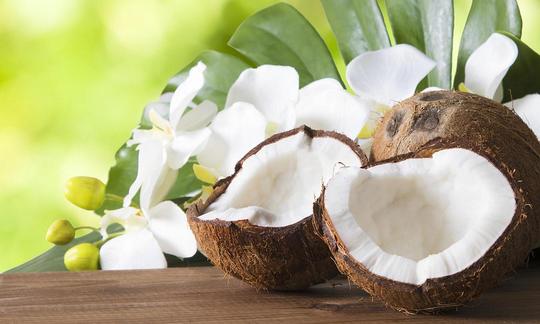

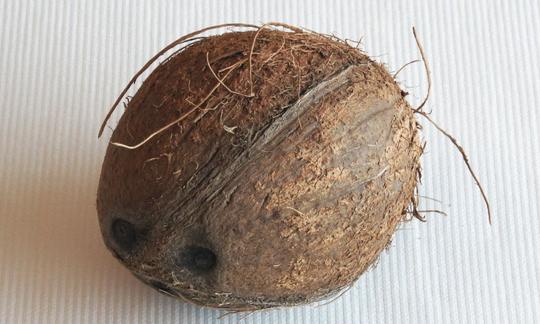

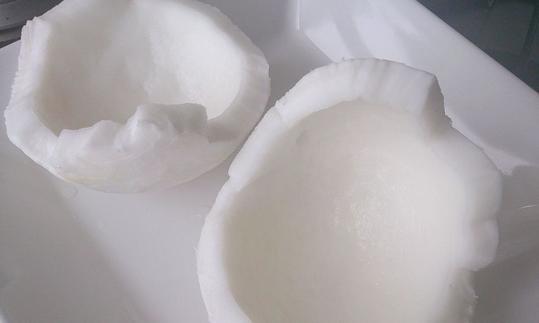

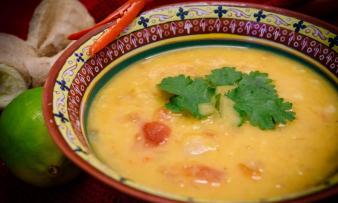
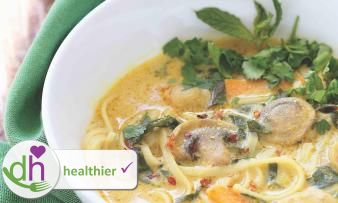
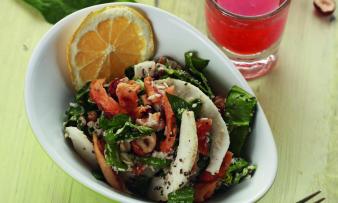





Comments